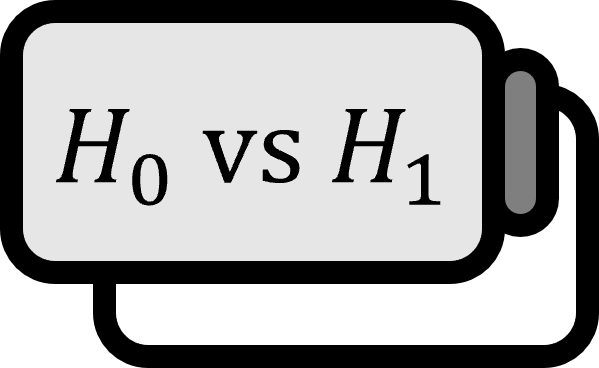Experimental Design in Statistics
Definition 1
The subject on which measurement or observation is performed is known as an experimental unit.
- The independent variable manipulated and varied by the experimenter is referred to as a factor.
- The intensity at which a factor is set is called a level.
- The combination of levels of factors is termed as a treatment.
- The dependent variable measured by the experimenter is called a response.
Completely Randomized Design 2
An experimental design in which a sample is selected independently from $k$ treatments is known as a completely randomized design.
Randomized Block Design 3
An experimental design in which treatments are divided into $b$ blocks with a sample selected from each block is termed a randomized block design.
Description
For example, consider a completely randomized design where the effectiveness of a blood sugar lowering drug A is investigated based on dosages administered to 13 patients. Here, the experimental unit is the patient, the factor is the blood sugar lowering drug, levels and treatments are the dosages administered, and the response is the blood sugar measured after administration.
| 10mg | 20mg | 30mg |
|---|---|---|
| 89 | 91 | 79 |
| 92 | 97 | 81 |
| 98 | 87 | 88 |
| 99 | 75 | |
| 94 |
As such, data obtained from a completely randomized design does not necessarily have the same number of samples for each treatment. While this example is good for explaining the difference between factors and levels, it doesn’t adequately explain the difference between levels and treatments. Now, let us add 8 more patients to create a control group (a group that does not receive a dosage) and a placebo group (a group that appears to receive a dosage but actually does not).
| ctrl | plcb | 10mg | 20mg | 30mg |
|---|---|---|---|---|
| 91 | 71 | 89 | 91 | 79 |
| 89 | 98 | 92 | 97 | 81 |
| 88 | 81 | 98 | 87 | 88 |
| 91 | 99 | 75 | ||
| 97 | 94 |
Here, the control group and the placebo group are identical in having 0mg in terms of the level of blood pressure-lowering drug, but when considering treatment, they are distinguished by whether the blood pressure-lowering agent, as a factor, was administered or not. Ultimately, the columns in the data are equivalent to the treatments in the experimental design.
A randomized block design is used to alleviate variance in the experimental units. For example, consider a factory producing lightweight screws using three methods: A, B, and C, with four workers in employment. Even if the method remains the same, comparing the precision of methods may be difficult due to differences in skills among workers. By having each worker produce screws using all methods, both the effects of the method and the skill level of the workers can simultaneously be compared.
| \ | A | B | C |
|---|---|---|---|
| 1 | 2.7 | 2.4 | 1.5 |
| 2 | 2.4 | 1.5 | 1.2 |
| 3 | 2.5 | 1.8 | 1.7 |
| 4 | 1.6 | 1.7 | 1.9 |
Here, the experimental unit is the task, the factor is the method, the levels are A, B, and C, the treatment is the specific method used by a specific worker, the response is the weight of the screw, and the block refers to the worker themselves.
